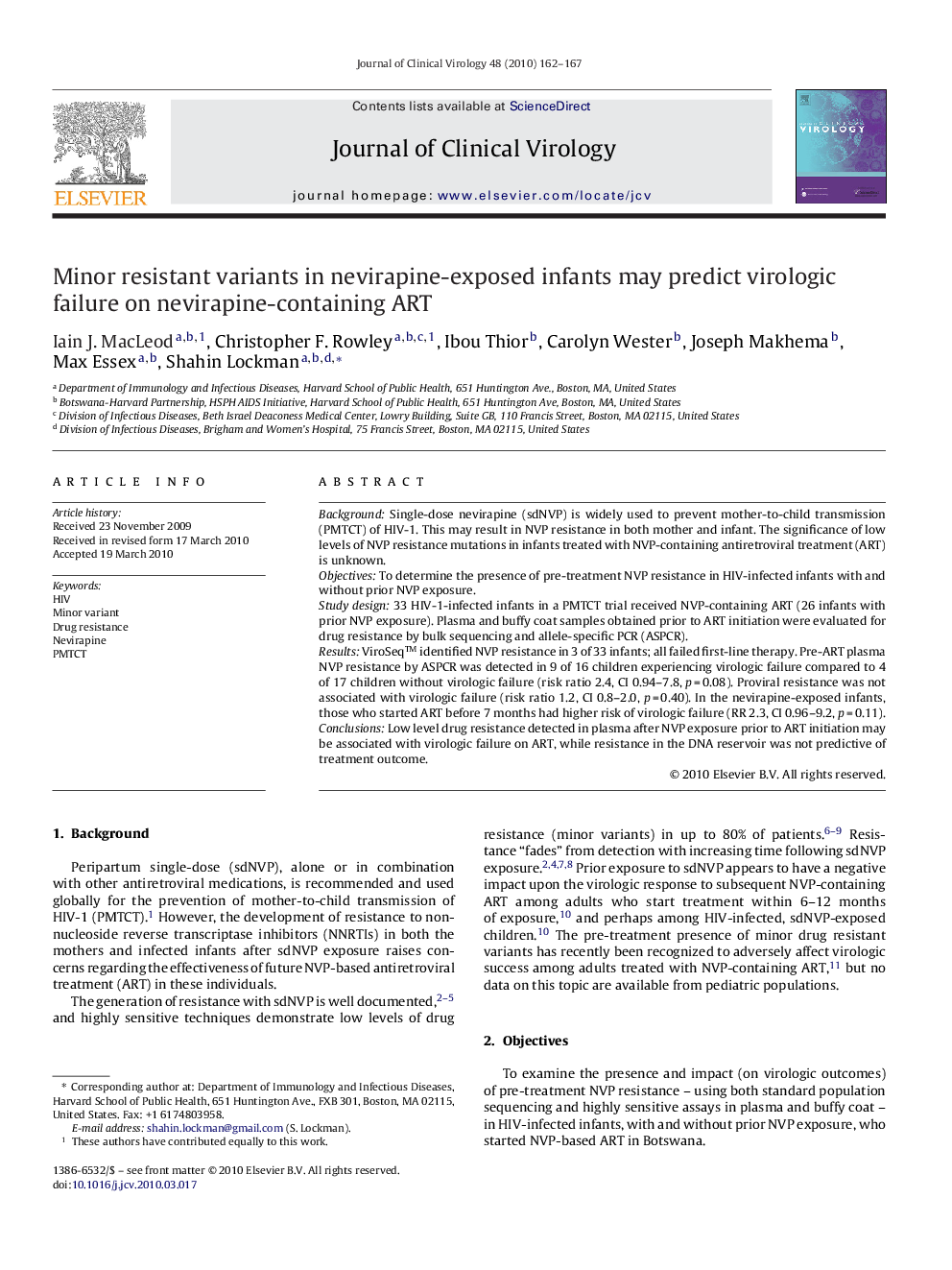| Article ID | Journal | Published Year | Pages | File Type |
|---|---|---|---|---|
| 3369461 | Journal of Clinical Virology | 2010 | 6 Pages |
BackgroundSingle-dose nevirapine (sdNVP) is widely used to prevent mother-to-child transmission (PMTCT) of HIV-1. This may result in NVP resistance in both mother and infant. The significance of low levels of NVP resistance mutations in infants treated with NVP-containing antiretroviral treatment (ART) is unknown.ObjectivesTo determine the presence of pre-treatment NVP resistance in HIV-infected infants with and without prior NVP exposure.Study design33 HIV-1-infected infants in a PMTCT trial received NVP-containing ART (26 infants with prior NVP exposure). Plasma and buffy coat samples obtained prior to ART initiation were evaluated for drug resistance by bulk sequencing and allele-specific PCR (ASPCR).ResultsViroSeq™ identified NVP resistance in 3 of 33 infants; all failed first-line therapy. Pre-ART plasma NVP resistance by ASPCR was detected in 9 of 16 children experiencing virologic failure compared to 4 of 17 children without virologic failure (risk ratio 2.4, CI 0.94–7.8, p = 0.08). Proviral resistance was not associated with virologic failure (risk ratio 1.2, CI 0.8–2.0, p = 0.40). In the nevirapine-exposed infants, those who started ART before 7 months had higher risk of virologic failure (RR 2.3, CI 0.96–9.2, p = 0.11).ConclusionsLow level drug resistance detected in plasma after NVP exposure prior to ART initiation may be associated with virologic failure on ART, while resistance in the DNA reservoir was not predictive of treatment outcome.
